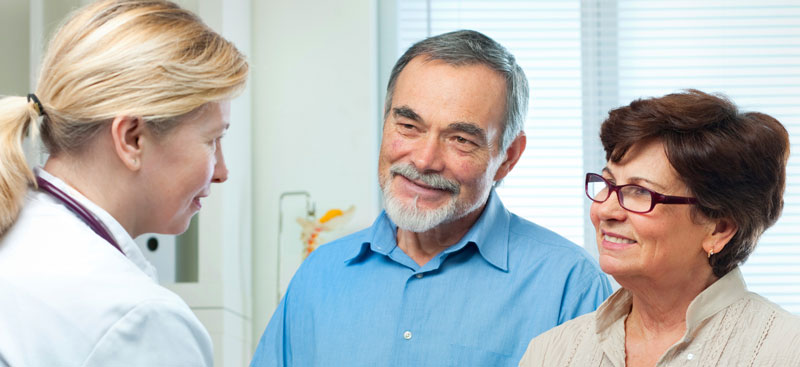Breathing new life into lung care
Oneida Health is breathing new life into lung care by taking steps to simplify your experience along the care pathway. This includes easier access to information and minimally invasive procedures that reduce discomfort and shorten recovery time. We also work to build strong partnerships between the medical community and the public in an effort to increase awareness and promote advocacy for better lung health. Together, we are helping to improve everyone’s well-being and transform lung care.
Lung Cancer causes more deaths than colon, breast, pancreatic & prostate cancers combined.
 Lung cancer is so prevalent that a new person is diagnosed with the disease every two minutes.3 Twice as many women die from lung cancer each year as die from breast cancer.
Lung cancer is so prevalent that a new person is diagnosed with the disease every two minutes.3 Twice as many women die from lung cancer each year as die from breast cancer.
You don’t need to be a smoker to get Lung Cancer
80% of lung cancer patients diagnosed today are never smokers or are former smokers who quit decades ago.1 You don’t need to be a smoker to get lung cancer – but it does increase your risk. Other factors that can increase your risk include a family history of cancer, previous cancer, exposure to certain cancer-causing materials, and more.2
Early stage Lung Cancer may show no symptoms
The most important thing to know about lung cancer is that early in the disease it often produces no signs or symptoms at all.1 That is why it is critical to get screened as soon as possible if you are at risk. In some patients, certain symptoms may appear that indicate the potential presence of lung cancer:
-
- Chronic cough
- Chest pain
- Hoarse voice
- Headaches
-
- Shortness of breath
- Coughing up blood
- Chronic fatigue
- Painful lumps
Remember, don’t wait for symptoms to appear. If you have one or more risk factors in the Lung Cancer Screening Criteria, please contact a physician.
Lung Cancer Screening at Oneida Health
Today the most common way to screen for lung cancer is with a low-dose CT (Computed Tomography) scan. The CT machine takes a detailed picture of your lungs that helps your physician locate anything abnormal. The scan takes less than 30 seconds and can detect extremely small nodules – which means cancer can be found in its earliest stages when it’s most treatable.
Do you qualify for a low dose lung cancer screening?
Recent changes in medical laws have increased the coverage for lung cancer screening. If you fit the program qualifications, and have Medicaid, Medicare, or health insurance, odds are good that the program is fully covered by your insurance.
Are you:
- 55-77 yrs of age
- Current or former cigarette smoker of at least 1 pack a day for 30 yrs or 2 packs a day for 15 yrs
If you answered yes to the qualifications above, your insurance company may cover your lung cancer screening. Contact your primary physician for more information, or to request a referral today.
For more information on lung cancer screening at OHC please call 315-361-2035.
Participants in the Lung Cancer Screening Program receive:
- A low dose CT scan that can be scheduled Mon-Fri 7:30am-6pm.
- A professional reading and interpretation of the CT Scan by a highly trained chest radiologist.
- Free smoking cessation counseling by a certified smoking cessation counselor is available.
- Reminder in one year to schedule another scan if you so desire.
If your doctor sees a spot on your lung that requires further diagnosis there are several options for you to choose from.
 Non-surgical biopsy options:
Non-surgical biopsy options:
Bronchoscopy – A thin, lighted tube (bronchoscope) is passed down the throat through either the mouth or nose to take samples of the spot seen by your doctor in the central areas of your lungs.
Endobronchial Ultrasound (EBUS) – An ultrasound assisted bronchoscopy that allows for better examination of the lymph nodes and other structures in the center of the chest. This method can be used to see if cancer has spread or to remove tissue samples for testing.
Electromagnetic Navigation Bronchoscopy™ (ENB™) procedure – Unlike traditional bronchoscopy, the doctor uses LungGPS™ technology (similar to GPS navigation) to access difficult-to-reach areas of the lungs, lymph nodes and surrounding areas. This is a minimally invasive method to take tissue samples for a diagnosis and can mark areas to pinpoint future treatment if needed.
Needle biopsy – A hollow needle is inserted directly through the chest to get a sample of the spot seen by your doctor on the low-dose CT scan.
Surgical biopsy options:
Mediastinoscopy – An incision is made above the breast-bone that allows a device with a camera to pass into the middle of the chest (mediastinum) to help doctors see the area and take tissue samples from the lymph nodes.
Wedge Resection – An incision is made in the chest and the abnormal section of the lung is removed and tested.
2 NCCN Guidelines for Patients®: Lung Cancer Screening Version 1.2014.
3 American Cancer Society: Facts and Figures 2013.
4 U.S. Preventive Services Task Force. Screening for Lung Cancer: U.S. Preventive Services
Task Force Recommendation Statement. AHRQ Publication No. 13-05196-EF-3.